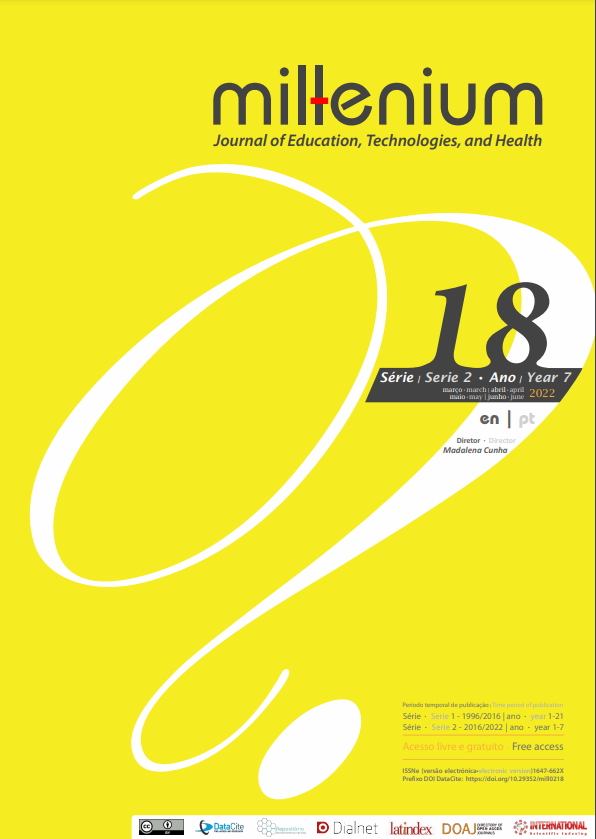Gamification, a new way of teaching in higher education
DOI:
https://doi.org/10.29352/mill0218.27247Abstract
Gamification consists of a new teaching method that makes use of the mechanics of games and takes them to the educational field with the purpose of obtaining better results.
The use of the term gamification with the meaning that we currently know originates in 2008, under the word “funware” coined by Gabe Zichermann.
This concept has become increasingly relevant in learning and teaching environments, starting the idea in the digital media industry. The concept has been spreading to other areas adapting and being adopted on a large scale in the second half of 2010.
Gamification becomes more visible through books like Reality is Broken by author Jane McGonigal and Game Based Marketing by Gabe Zichermann.
Regarding the conception of the concept, despite the fact that there has been much controversy, the most accepted definition is Sebastian Deterding, which conceptualizes that gamification is the use of game design elements in contexts that are not games. It should be noted that this aims to lead to changes in the behavior and motivation of users through experiences that are reminiscent of games. Another issue that should be highlighted between the differences between gamification and what are considered serious games is that they are games that are planned so that players are entertained while they learn, train or change their behavior. Gamification pursues the above by making use of the mechanics and design of the game experience. Therefore, it uses game strategies such as rewards, obtaining points, classification in higher levels, as a fundamental pillar for the participants to carry out the requested activities. Another strategy is also to use the challenges and make the scores visible to the rest of the users, so that it motivates and awakens the participants so that their involvement in the tasks required is greater. Finally, it should be noted that gamification makes use of social networks in order to increase commitment and interaction between participants.
Downloads
References
Bruner, J. (1960). El proceso de la educación. Cambridge, MA: Prensa de la Universidad de Harvard.
Deterding, S., Dixon, D., Khaled, R. y Nacke, L. (2011). From Game Design Elements to Gamefulness: Defining “Gamification.” In Proceedings of the 15th International Academic MindTrek Conference: Envisioning Future Media Environments (pp. 9–15). New York, NY, USA: ACM.
Dewey, J. (1997). How we think. New York: Dover Publications.
Freud, S. (1969). Psicología de las masas; Más allá del principio del placer; El Porvenir de una ilusión. Madrid: Alianza.
Montessori, M. (1964). The Montessori method. New York: Schocken Books.
Piaget, J. (1999). Play, dreams and imitation in childhood. London: Psychology Press.
Vygotsky, L.S. (1978). Mind in society: The development of higher psychological processes. Cambridge, MA: Harvard University Press.
Zichermann, G., Linder, J. (2010). Game -Based Marketing: Inspire Customer Loyalty Through Rewards, Challenges, and Contests. Nueva Jersey: John Wiley & Sons.
Zichermann, G. and Linder, J. (2010). Game-Based Marketing: Inspire Customer Loyalty Through Rewards, Challenges, and Contests. Wiley, Hoboken, NJ, 2010.
Platón (427-347 a. C). Teoría de las Ideas (Metafísica platónica).
Downloads
Published
How to Cite
Issue
Section
License
Copyright (c) 2022 Millenium - Journal of Education, Technologies, and Health

This work is licensed under a Creative Commons Attribution 4.0 International License.
Authors who submit proposals for this journal agree to the following terms:
a) Articles are published under the Licença Creative Commons (CC BY 4.0), in full open-access, without any cost or fees of any kind to the author or the reader;
b) The authors retain copyright and grant the journal right of first publication, allowing the free sharing of work, provided it is correctly attributed the authorship and initial publication in this journal;
c) The authors are permitted to take on additional contracts separately for non-exclusive distribution of the version of the work published in this journal (eg, post it to an institutional repository or as a book), with an acknowledgment of its initial publication in this journal;
d) Authors are permitted and encouraged to publish and distribute their work online (eg, in institutional repositories or on their website) as it can lead to productive exchanges, as well as increase the impact and citation of published work
Documents required for submission
Article template (Editable format)





